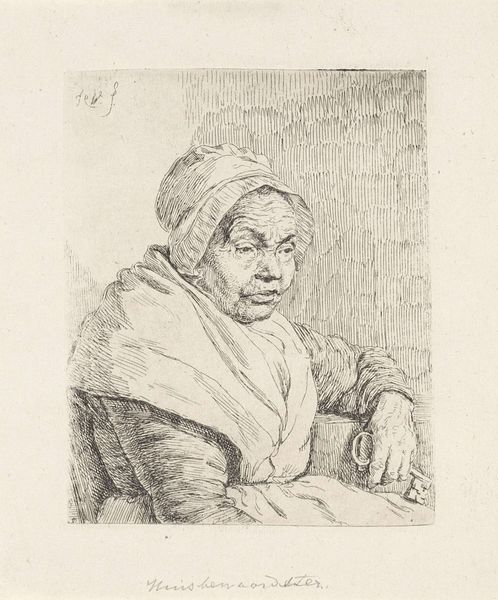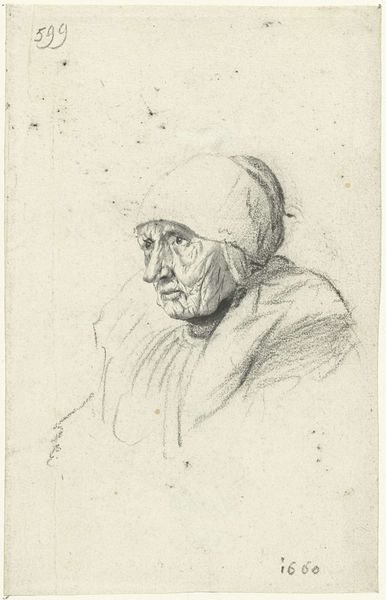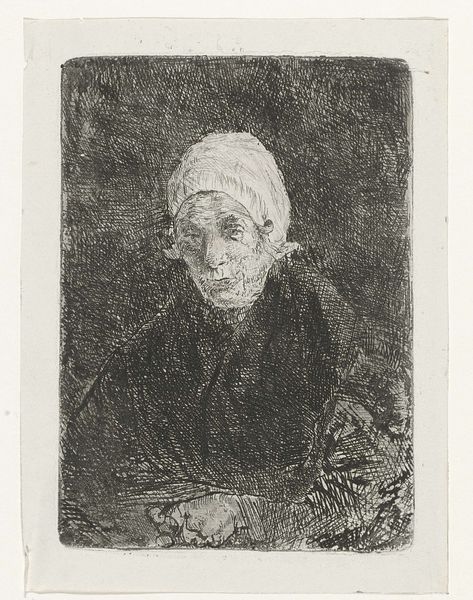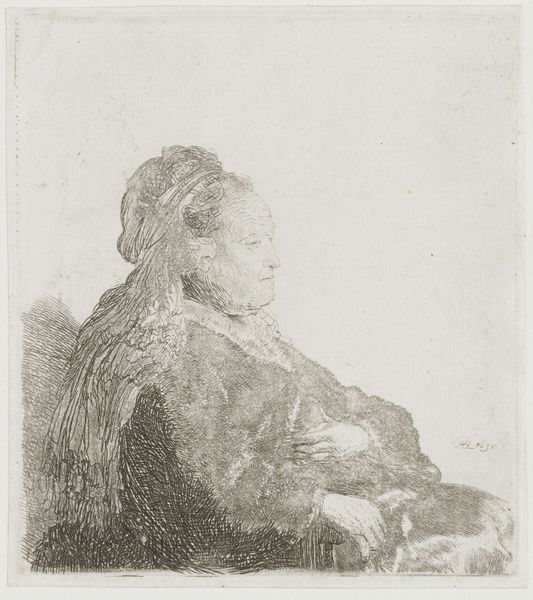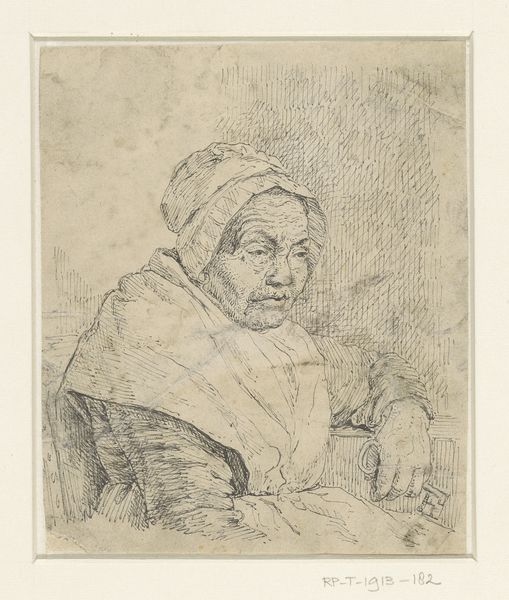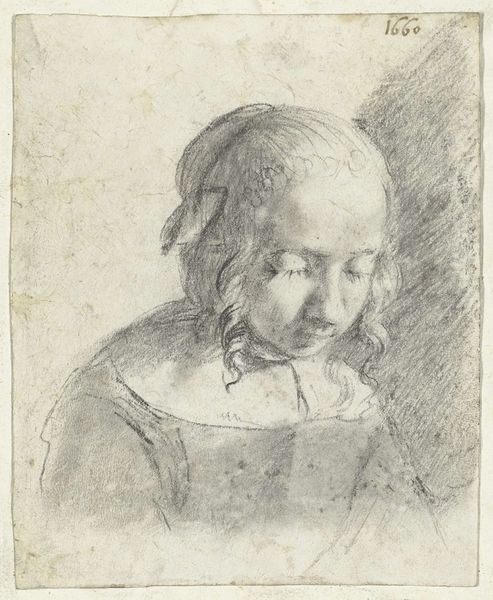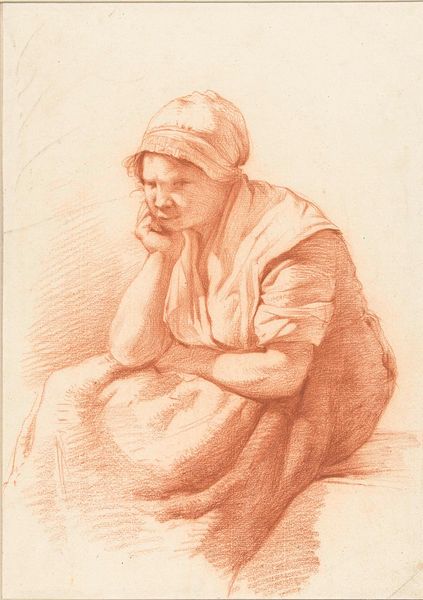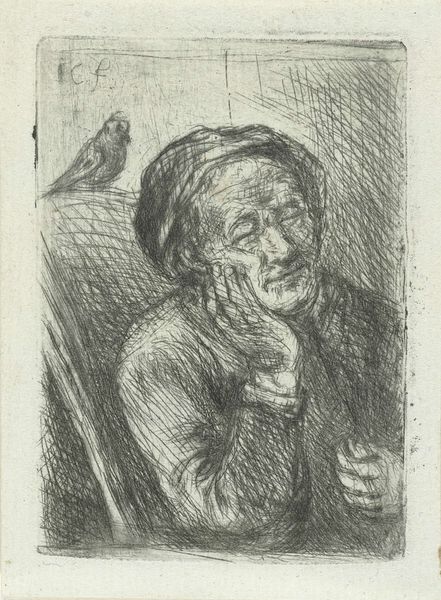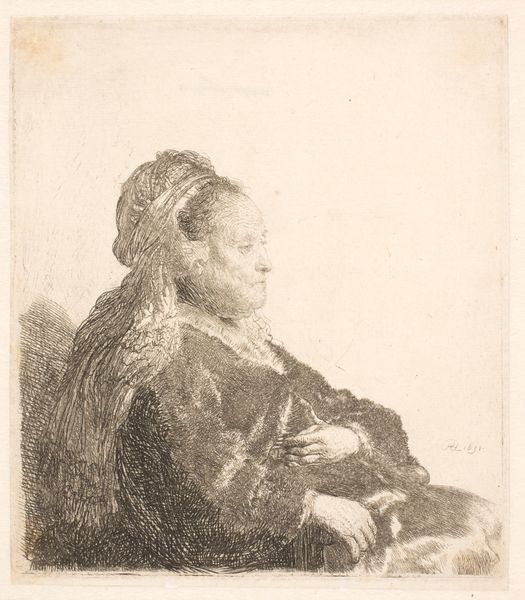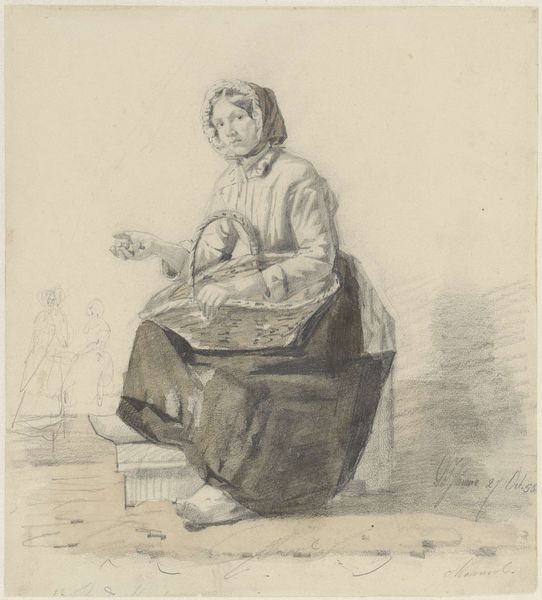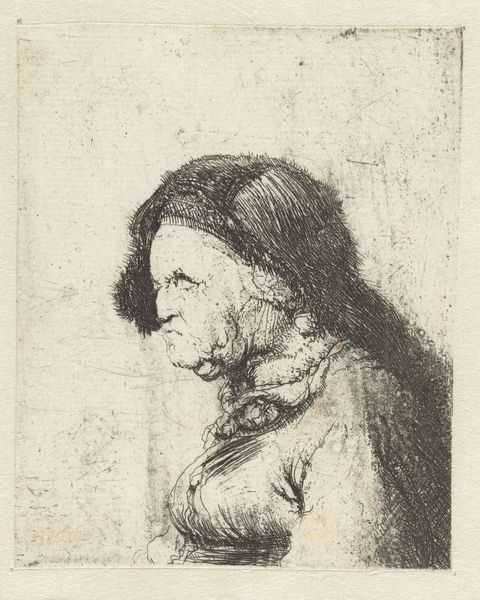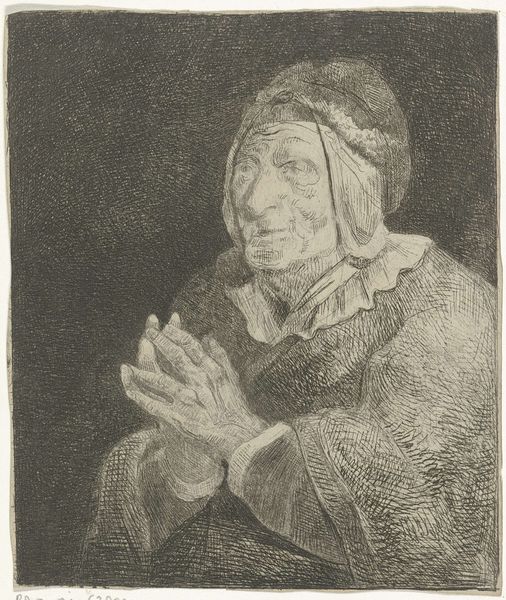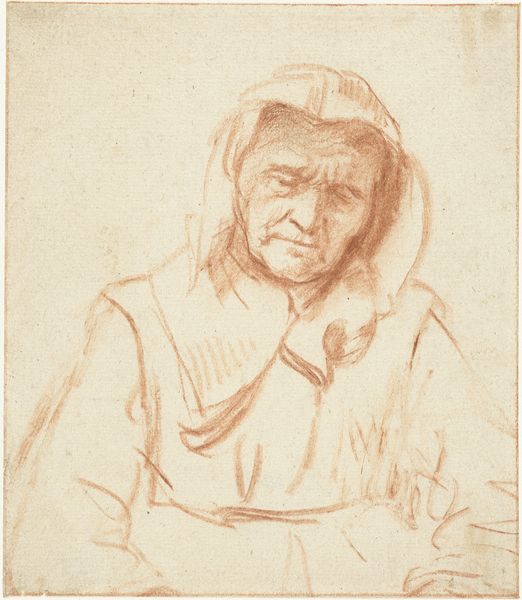
drawing, pencil
#
portrait
#
drawing
#
dutch-golden-age
#
pencil sketch
#
pencil drawing
#
pencil
#
portrait drawing
#
genre-painting
#
realism
Dimensions: height 132 mm, width 104 mm
Copyright: Rijks Museum: Open Domain
Curator: This is "Seated Old Woman, in Profile," a drawing by Moses ter Borch, created around 1660. It’s currently part of the Rijksmuseum's collection. What strikes you initially about this piece? Editor: A kind of quiet sadness. It’s there in the downcast gaze, the clasped hands... and honestly, the rather rudimentary strokes. I feel the artist trying to capture something fleeting, not obsessed with perfection. Curator: Indeed. The drawing offers an intimate look, especially given its likely function as a preliminary study. Note how the use of pencil contributes to its unpolished, almost ephemeral quality. Ter Borch's technique emphasizes the physical process. Pencil as a readily available, portable medium allowed artists like him to quickly document everyday life and figures around them. It moves art beyond just the finished painting. Editor: Absolutely. There’s a vulnerability in her posture, amplified by the sketchy quality of the lines. I can imagine her sharing a story, a memory perhaps. And you see the skill shining even in the swift rendering of textures like the soft folds of her cap. Curator: The work challenges assumptions about artistic skill and labor. Is the "value" in the finished piece, or in these more spontaneous studies? This drawing elevates what could be considered simply preparatory work into something deserving our attention. What constitutes a valuable artwork or a "finished" artwork when viewing her portrait? Editor: It's the raw emotion that speaks loudest. She embodies history and a lifetime of lived experience; Ter Borch, through the quick sketch, brings us closer to understanding both this subject, but maybe our own grandmothers or aunts... Curator: Right. He takes this ordinary moment and transforms it into a poignant study on aging and quiet contemplation using accessible tools, materials that were available to more individuals. The focus on technique helps us view Dutch Golden Age art beyond just grand history paintings or wealthy merchant portraits. Editor: It reminds us that beauty often resides in simplicity, the incomplete, the deeply felt. Thank you for that illuminating insight! Curator: A pleasure! Hopefully this look at materiality expands our understanding of not only art from the Dutch Golden Age, but maybe our lives and interactions.
Comments
No comments
Be the first to comment and join the conversation on the ultimate creative platform.
